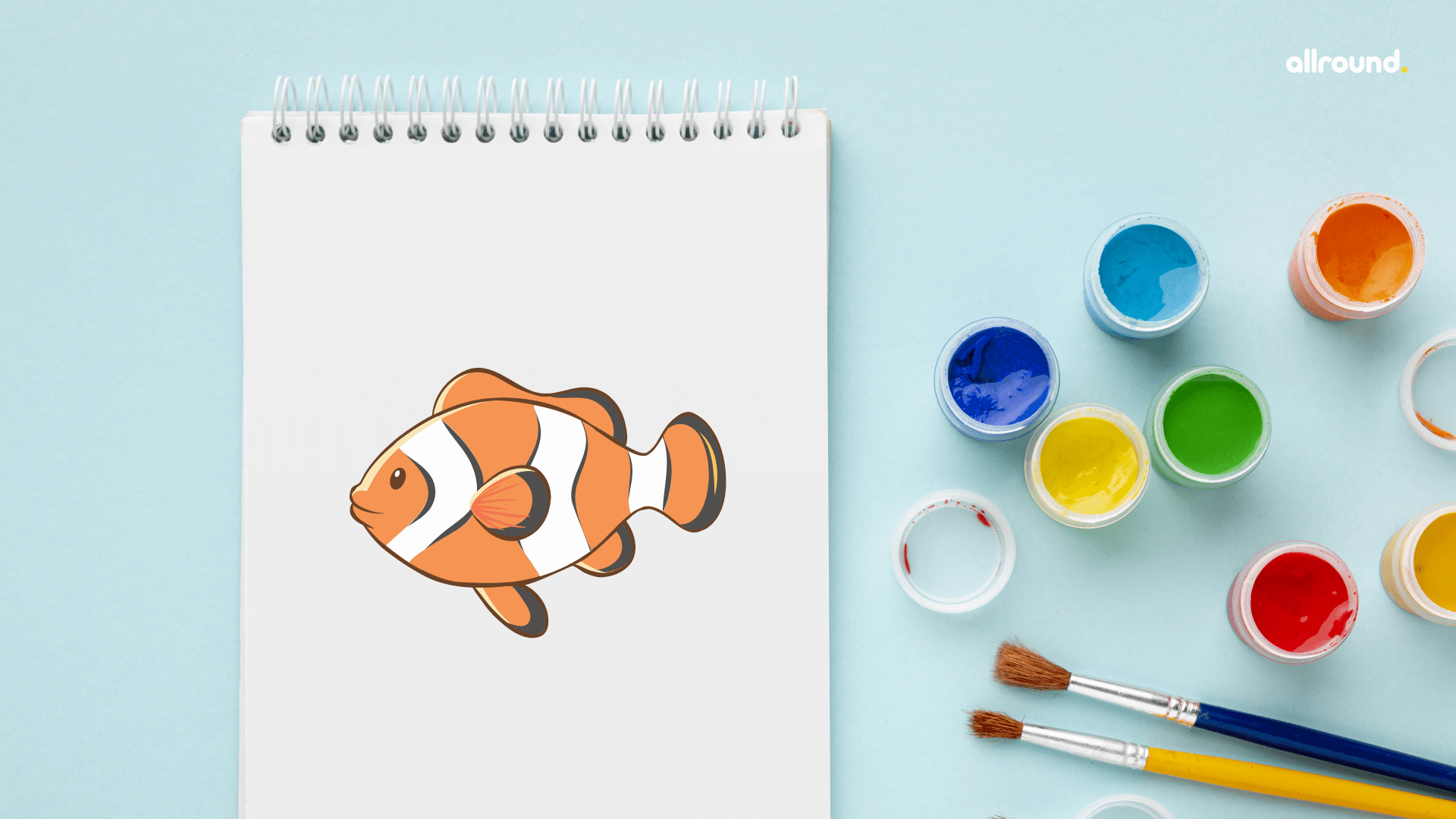How to Draw a Clownfish?3 min read
Have you watched the Pixar Animation Studios’ famous animated films “Finding Nemo” and “Finding Dory” with your kid? Then you will be familiar with what a clownfish is and how it looks. If you haven’t yet, then we’d suggest you watch those movies soon! Your kids will definitely love these films.
Clownfish are a very interesting species of fish and if your child is fascinated by the sea world and all its creatures, this art activity is for him! We have a step-by-step easy guide to help your child learn how to draw a clownfish. But first, let’s get to know a little more about these cool fish.
Contents
What is a clownfish?
Clownfish are also called clown anemonefish and are a species of anemonefish that are best known for their striking bright orange and white colors. They get their name from the multicolored sea anemone in which they make their home. Clownfish are probably one of the most easily recognizable of all reef-dwellers because of their distinctive orange with three white bars.
Clownfish are omnivores; this means that they eat both meat and plants. They feed on worms, algae, zooplankton, small crustaceans as well as dead anemone tentacles. These fish are most commonly found on coral reefs in the tropical Indian and Pacific oceans.
Fun clownfish facts
Here are some fun facts about clownfish that your child can share with his friends.
- Schools of clownfish have a very strict hierarchy! The most aggressive and dominant female is on top.
- All clownfish are born male. When the dominant female dies, the dominant male will turn itself into a female!
- Clownfish are not super great swimmers. Their swimming patterns are quite erratic when they move out of their anemones.
- Clownfish make popping and clicking noises to communicate.
- Although anemone stings, the clownfish develops an immunity to the toxins of the anemone; the anemone and clownfish have a symbiotic relationship.
- There are about thirty known species of clownfish!
We hope you learned something interesting about clownfish because they are truly amazing creatures.
What materials are required to draw a clownfish?
The materials that you will require to draw a clownfish include:
- Pencil
- Eraser
- Drawing paper
- Black marker
- Crayons/color pencils/paints
How long will it take to draw a clownfish?
It may take kids around an hour to draw and color/paint a clownfish.
How to draw a clownfish?
Teach your kids the importance of using guides when drawing. Guides will help to provide a good reference point when drawing. Fold your drawing paper horizontally and vertically in half. Alternatively, you could use a pencil to draw horizontal and vertical dotted lines through the center of the page. Drawing guides are one of the first things that kids should learn during drawing lessons.
Follow these easy steps to draw a cute clownfish:
Step 1: Start by drawing the body of your fish.
Step 2: Finish off with the tail of the fish.
Step 3: Now draw the face of the fish.
Step 4: Add the wavy center stripe of the fish.
Step 5: Now add stripes to your tail.
Step 6: Draw the fish fins in between the stripes.
Step 7: Add a side fin.
Step 8: Draw some tiny circles in the background for the bubbles.
Step 9: Outline your clownfish with a black marker. Fill it with color or paint it.
There you have it! You’ve just drawn and colored a really pretty picture of a clownfish. We hope your kids enjoyed this drawing project.





